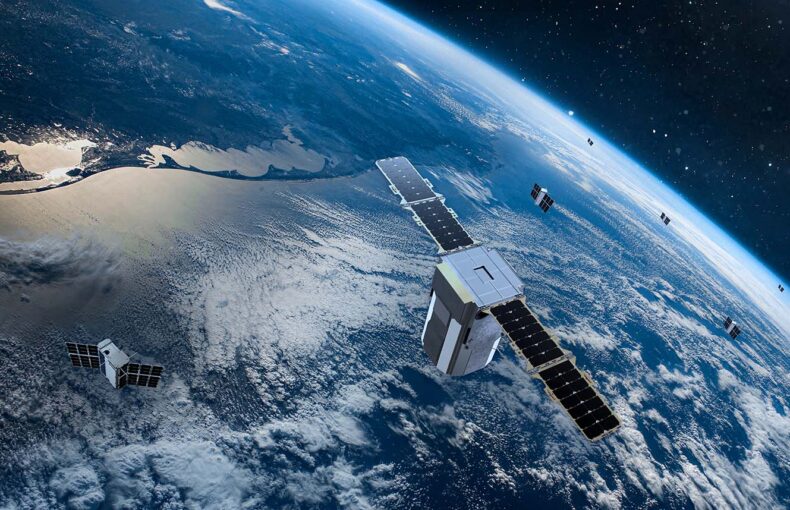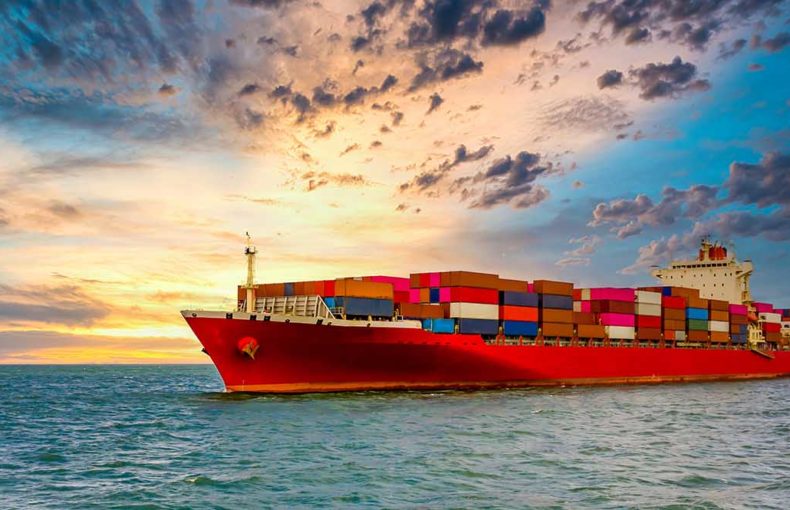Three steps of going green – How data is the crucial ingredient
Eco-friendly initiatives like sustainable supply chains can do more than help reduce emissions—they also support cost-saving measures. Data can help bring them to life.
There are three steps to lower emissions and reduce a company’s carbon footprint: measurement, analysis, and mitigation. The third is not possible without the first two and none of them are possible without data.
An eco-friendly link to the logistic chain
Imagine for a moment an agricultural supply chain management company that specializes in moving fresh produce from the United States to Europe. After years of success and growth, the organization—let’s call it AgMove—decides to build on its positive momentum by officially going green. The decision will not only be good for the environment, but it will also generate brand awareness and cost savings from fuel reductions.
Going green puts AgMove in good company. About 40 percent of businesses consider resource management programs the “right thing to do,” according to a study from Deloitte, and nearly 70 percent reported dedicating maximum effort to these programs. But adopting green practices is no easy task, especially for an agricultural supply company with global operations.
Data can help.
Returning to our example, AgMove discovers that trustworthy information and tools built from robust data can help reduce its carbon footprint without increasing its bottom line. In fact, companies of all types can leverage data to launch innovative environmental strategies that make business sense.
Even the United Nations agrees. “New sources of data, such as satellite data, new technologies, and new analytical approaches,” it said, “if applied responsibly, can enable more agile, efficient and evidence-based decision-making and can better measure progress on the Sustainable Development Goals in a way that is both inclusive and fair.”
As we’ll see, data helps AgMove in the three key steps of green logistics, as identified in Sustainable Supply Chains: measurement, analysis, and mitigation.
Measurement
AgMove has a lot to keep track of. Seafood from the Northeast, grain from the Midwest, and fruits from the South must all be transported by trucks, ships, or airplanes, across multiple U.S. states, then the Atlantic, and finally into Europe. Not to mention the multiple stages of warehousing and inventory.
“Until relatively recently businesses struggled to get a full picture of the impact of their own operations,” John Hsu, an expert in sustainability data, wrote in the Guardian. “But now leading businesses … are trying to understand the entire end-to-end impact of their businesses, throughout the value chain.”
Data can help companies today can achieve a more complete view of operations. In fact, the time is ripe for monitoring and measuring. Satellites and connected devices can help businesses collect a universe of data about activities, from the granular level to the grand scale.
As transportation accounts for one of the most significant portions of emissions in the logistic business, AgMove starts its greening process by measuring and recording data about everything that impacts transportation. It monitors road traffic, vehicle emissions, flight patterns, the weather, shipping routes, and sea conditions. In fact, it measures in detail each leg in a journey that carries an orange from a farm in Florida to a grocery store in Frankfurt.
Spire Global, for example, operates a constellation of nanosatellites that reveal detailed information about vessel routes and conditions that may affect a ship’s journey. It also offers data solutions for airlines and global weather. Details about both subjects can help companies better measure fuel expenditure, transport patterns, and other carbon footprint-impacting factors.
Our maritime services, in particular, helped Gravity Supply Chain gain end-to-end supply chain visibility. With this insight, Gravity was more equipped to make data-driven decisions. Similarly, our AIS data API helps Shipfix users to visualize and analyze the global trade of commodities and products.
“Measuring and understanding how doing business really does affect the natural world will open up new opportunities for bringing sustainability inside an organization,” wrote Hsu.
Analysis
Once AgMove collects high-quality data about its operations it can begin analysis to pinpoint precise opportunities for boosting efficiency. Comparing historical and recent datasets, as well as datasets from multiple categories, helps reveal which operations need the most attention, where they appear along the supply chain, and even new avenues to reduce emissions.
When it comes to logistics transportation, some of the best variables to analyze for opportunities to reduce emissions are route distance and efficiency, mode of transportation, equipment conditions, load planning, and operation planning.
AgMove decides to analyze the weather and flight information of its overnight fresh lobster delivery from Maine to France. The information reveals excess fuel consumption during weather-related delays that force planes to idle on the tarmac or circle in holding patterns.
For AgMove’s orange shipments, comparing land transport with detailed vessel tracking uncovers two points in the logistic chain where fruit sits in emission-heavy trucks and climate-controlled warehouses, waiting to be loaded onto vessels.
Identifying these green opportunities isn’t always easy. As Supply Chain Digital points out, “the challenge for modern supply chains is knowing where to place a strategic focus and not becoming paralyzed by information overload.”
It can help to have a partner who collects and analyzes data. Data partners can help solve this challenge by providing data solutions that evolve with customers’ needs, so that efforts to go green continue to improve productivity in the long run.
Mitigation
AgMove’s next step to greening its logistics is turning data and analysis into solutions that mitigate emissions. Using data for this process helps ensure its solutions are built on evidence, are targeted, and have the potential to be automated.
In general, supply chain management companies should consider solutions that optimize vehicle routing, incorporate green modes of transport, schedule equipment maintenance, and streamline loading and unloading, according to Sustainable Supply Chains. However, this list is by no means exhaustive.
As AgMove takes this step, it decides to incorporate weather forecasting into its transportation planning. The forecasting helps AgMove predict weather-related delays that impact departure, arrival, and cargo loading. And in turn, avoiding the delays prevents burning excess fuel.
Using historical and up-to-date flight and maritime data, AgMove also plans alternative routes for regions that tend to experience extreme weather during specific times of the year—for example, the Northeast in winter and the Gulf Coast during hurricane season. This decision helps AgMove reduce the chance of fresh goods losses.
AgMove also implements an early warning system with information about when vessels will arrive at ports. The alert notifies its trucking department, so drivers know precisely when to arrive at the dock. This system saves the trucks from burning fuel while idling outside the ports.
With real-time data, AgMove starts automating these systems. And in both cases, solutions that reduce emissions and waste also help ensure timely delivery.
Spire has already helped clients achieve some of these advantages. Clearmetal optimized costs and operations with a machine learning engine that predicts port arrival using multiple datasets. And a leading dry bulk shipping company, Oldendorff, developed an efficient fuel consumption model using weather and vessel data.
The data is the key
With green practices in place, AgMove can rest assured that it’s meeting its client’s demands and reducing emissions without driving up costs. Its farming partners will certainly welcome a cleaner environment, and they can also use data to help boost performance and implement sustainable practices.
For companies across industries, now is the time to start going green or expand eco-conscious practices already in place. Solutions should become more efficient as technology develops and computing advances, with the multitude of incremental improvements adding up into significant cuts to costs and emissions. The future will thank you for your actions today.
 Written by
Written by


